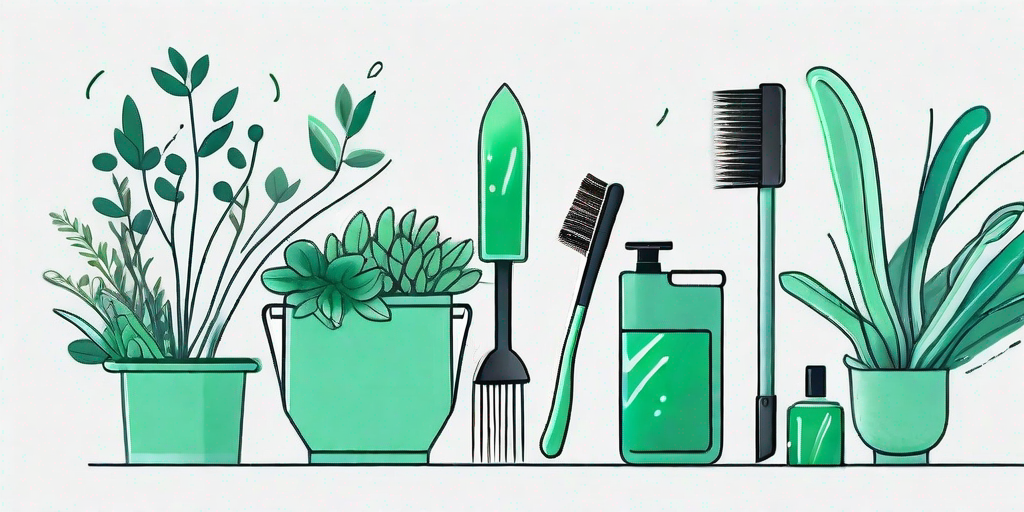
If you're a green thumb enthusiast, you've probably encountered the sticky leaf situation. It's like a bad hair day for your plants - not a pretty sight. But don't fret, we're here to help you unstick your garden woes and get your plants back to their glossy, vibrant selves.
Understanding the Sticky Situation
Before we dive into the solutions, let's first understand why your leaves are acting like they've been doused in honey. It's not because they're trying to attract bees or because they're craving for some sweet attention. The sticky substance is actually a result of a pest infestation, specifically, sap-sucking pests.
These tiny troublemakers pierce the leaves and feed on the plant's sap. As they feed, they excrete a sticky substance called honeydew. So, if you notice a shiny, sticky layer on your plant leaves, it's not morning dew or leftover rain. It's a sign that your plants are under attack.
Identifying the Culprits
Now that we know the cause, let's meet the culprits. The most common sap-sucking pests are aphids, scale insects, and whiteflies. Each of these pests has a unique modus operandi and identifying them is the first step towards saving your plants.
Aphids are small, pear-shaped insects that come in various colors. They usually cluster on the undersides of leaves or on new growth. Scale insects, on the other hand, are harder to spot. They look like small bumps on the plant surface and can be mistaken for natural plant growth. Lastly, whiteflies are tiny, moth-like insects that fly around when the plant is disturbed.
Unsticking the Situation
Manual Removal
Roll up your sleeves, it's time for some action. For a small infestation, manual removal can be effective. Simply wipe the leaves with a damp cloth or sponge. For stubborn scale insects, use an old toothbrush to gently scrub them off. Remember, be gentle. You're dealing with leaves, not dirty dishes.
For aphids, you can use a strong jet of water to dislodge them. However, make sure your plant can handle the water pressure. You don't want to end up with a pest-free but battered plant.
Introducing Natural Predators
If you're not a fan of getting your hands dirty, let nature do the work. Introduce natural predators like ladybugs, lacewings, and parasitic wasps into your garden. These beneficial insects love to feast on sap-sucking pests. It's like inviting guests over for a buffet, only the buffet is your pest problem.
However, remember that these predators need time to work. So, be patient and let them enjoy their meal.
Using Insecticidal Soaps and Oils
If the infestation is severe, it's time to bring out the big guns - insecticidal soaps and oils. These are safe for most plants and effective against a wide range of pests. Simply spray it on the affected areas and wait for the magic to happen.
However, always test a small area first to ensure your plant is not sensitive to the product. Also, follow the instructions on the label. More is not always better.
Preventing Future Sticky Situations
Prevention is better than cure, especially when it comes to sticky leaves. Regularly inspect your plants for signs of pests. Pay special attention to the undersides of leaves and new growth. Also, keep your plants healthy. A healthy plant is less likely to attract pests.
Additionally, avoid over-fertilizing your plants. Excess nitrogen can lead to soft, lush growth, which is a magnet for sap-sucking pests. So, go easy on the fertilizer. Your plants will thank you.
Frequently Asked Questions
- Can sticky leaves harm my other plants?
Yes, the pests causing the stickiness can spread to other plants. So, it's important to deal with the problem promptly.
- Can I use chemical pesticides?
While chemical pesticides can be effective, they can also harm beneficial insects and the environment. So, it's best to try safer options first.
- Is the sticky substance harmful to humans?
No, the sticky substance is not harmful to humans. However, it can attract ants and other insects, which can be a nuisance.
So, there you have it, a comprehensive guide to dealing with sticky leaves. Remember, a sticky situation is not the end of the world. With a little patience and the right approach, you can get your plants back to their prime. Now, go forth and unstick your garden woes!















